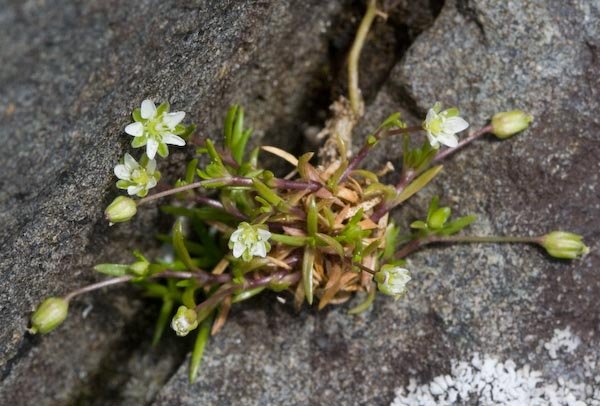
Beach Pearlwort
Sagina crassicaulis
This plant seems to be doing fairly well considering its location in the crack of a rock well within the splash zone of the beach. In more favorable conditions I have seen this species form an extensive cover.
Questions:
This species is often found along the beaches which makes me wonder if they are distributed via the water. The seeds are held (loosely? I haven’t checked) in open cups, so it seems like they could easily fall into the water during the very high Fall and Winter tides. It should be fairly easy to determine whether they germinate after a soaking in salt water.
Other Photos
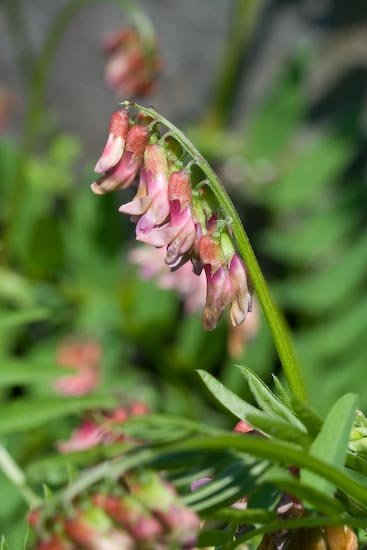
Giant Vetch
Vicia nigricans ssp. gigantea
This plant is common along the rocky beaches along Lincoln Street and Totem Park. It grows quite large, and the seedpods look very much like peas.
Other Photos
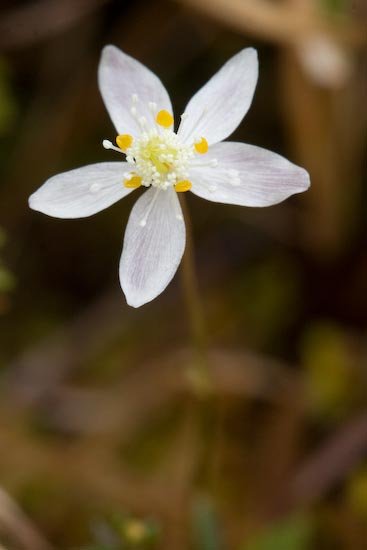
Three-leaf Goldthread
Coptis trifolia
Most of the year this plant is easy to miss. It’s leaves just seem to blend into the ‘wall of green’ in the muskeg and whatever unlike one of its close relatives, its seedpods are apparently not that showy either (at least I have never noticed them). The exception to this is the brief period in the spring when small white flowers can be seen dotting the muskeg. The plant is actually fairly common in the muskegs around town, even if it’s often overlooked.


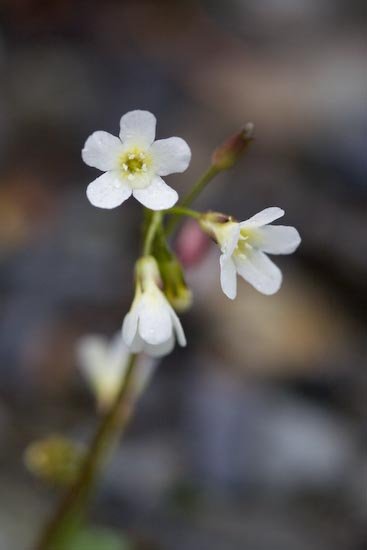
Sitka Mist-maiden
Romanzoffia sitchensis
I ususally notice this species near streams on rocky areas such as gravel bars or cliffs. I would not say it’s abundant, but it is not too hard to find if you look in the right areas.


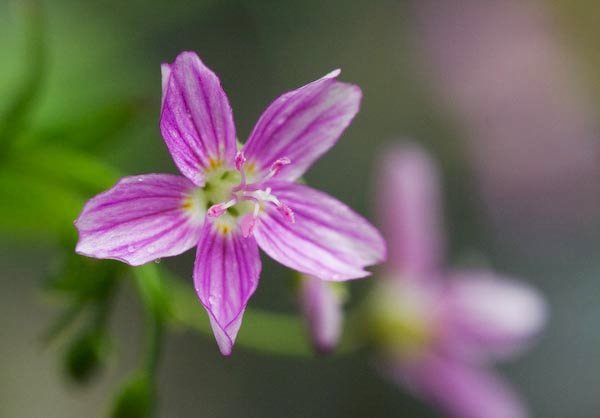
Siberian Miner’s Lettuce
Claytonia sibirica
This is an abundant species that seems to compete well in disturbed areas without a lot of soil. The flowers come in two colors, white and pink. I have no idea what the genetics might be for the color forms.
Questions:
Is flower color determined by genetics? If so, is it relatively easy to determine the color a new plant will produce based on the parent plants?
I have never noticed intermediate color forms, do they exist?












